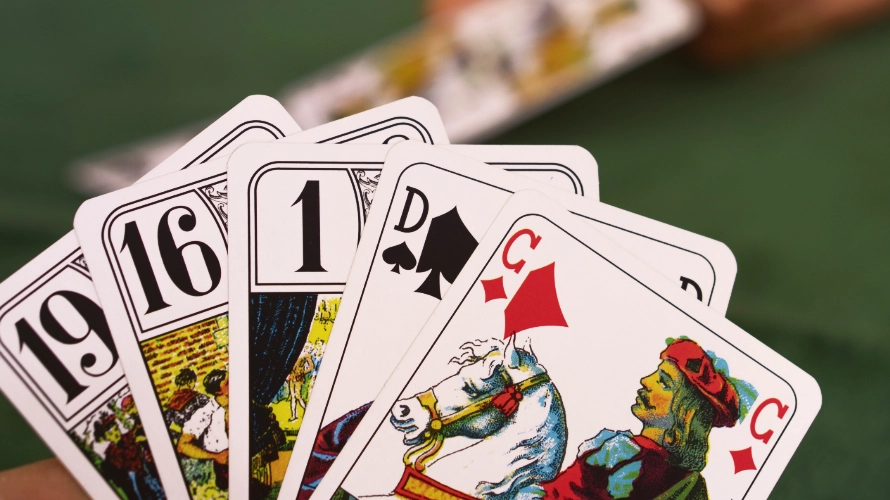Jeu de Tarot: The mysterious card game
As a kid I loved watching my parents and their friends get ready and get the Jeu de Tarot deck of cards out of it’s box. There was always something magical about those evenings, the cards themselves felt grand, larger than any ordinary deck, adorned with vivid, intricate designs and mysterious extra cards that set them apart. The adults would pour a glass of wine, nibble on a bit of apéro, and settle in. The adults would lean in close over the cards, sometimes erupting into giggles, sometimes falling oddly silent as the stakes of the game sharpened. For us kids, there was a wonderful sense of freedom, we’d scurry and play beneath the table, catching stray snippets of the game above and feeling utterly at home in the middle of it all. Those evenings just glowed with that easy mix of playful chaos and simple togetherness.
I remember promising myself that one day, I would finally master the secrets of this game, a tradition so woven into French life, yet so rarely seen beyond its borders. Now, after years of wishing and watching, I want to share with you the story, spirit, and joy of Tarot: a card game that is utterly, unmistakably French in flavour, even if its earliest roots stretch across the border to their neighbors.
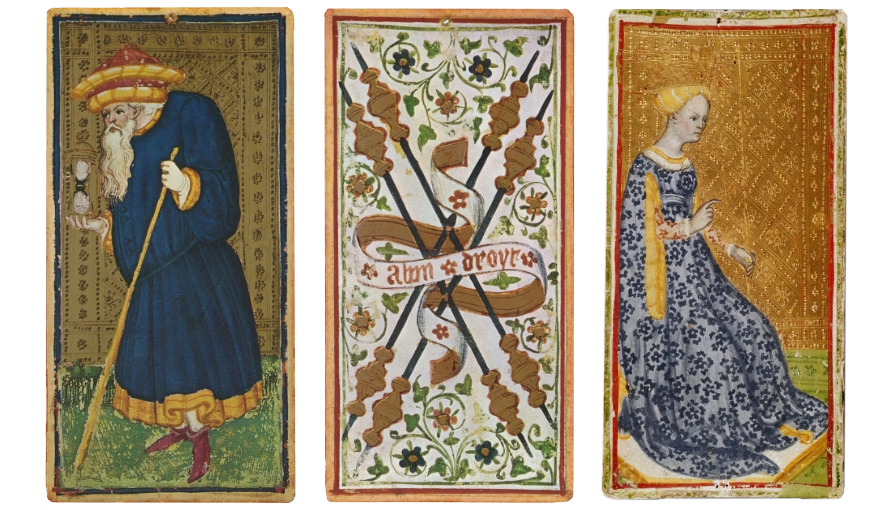
Origins: From Italian nobility to French tables
Tarot’s roots stretch back to the courts of northern Italy in the early 15th century. Here, the game was born as a luxurious diversion for the wealthy, an elaborate enhancement of standard playing cards known then as “trionfi”, or as we would say in English triumphs. The earliest decks, known as “tarocchi”, were a popular trick-taking card game among Italian nobility and artistocracy. These ornate decks, sometimes painted with gold and shimmering with allegorical figures, signaled status and subtle competition among Milanese and Ferrarese elites. The Visconti-Sforza deck, widely considered the oldest surviving tarot, typifies this blend of opulence and symbolism.
Crossing the Alps: France embraces the game
The winds of war and politics soon carried tarot over the Alps. By the late 15th century, references to tarot and its players appear at the French court, with one notable set often (though mistakenly) linked to King Charles VI. By the mid-1500s, tarot had captured the French imagination and entered the national vernacular, satirized in Rabelais’ “Gargantua” and enjoyed by nobles and artists alike.
Initially an aristocratic pursuit, tarot’s appeal spread, evolving from a symbol of courtly sophistication to a more widely loved source of diversion and, eventually, tradition.
The Tarot de Marseille: A French Standard
The Tarot de Marseille pattern became the French touchstone for tarot decks, emerging in the 17th and 18th centuries, especially in Marseille, Lyon, Avignon, and Dijon. Unlike its Italian cousins, the Marseille deck’s trump cards (Major Arcana) were heavily symbolic and laid visual foundations that persist today, The Magician (Le Bateleur), The Pope (Le Pape), The Lovers (L’Amoureux), among others. These cards were produced initially for gameplay, with themes reflecting social and spiritual archetypes of the era.
The Cardmaker’s Craft and Social Place
Under the Ancien Régime, card-making (cartiers, tarotiers) was a regulated and heavily taxed profession, regarded as “middling” and grouping artisans with butchers and tailors. Early tarot decks were painted by hand for wealthy clients before mass production took hold through woodblock printing.
What makes the Jeu de Tarot distinctive?
Anatomy of the Tarot Deck: Unlike common playing cards, a tarot deck is a study in complexity and beauty:
- 78 cards in total
- Four suits: Hearts, Diamonds, Spades, Clubs (French style), each with 14 cards, 10 numbered and four court cards (King, Queen, Knight, Jack)
- The “Atouts” (Trumps): 21 numbered trump cards plus a special unnumbered trump, the “Excuse” or “Fool”, known for its trickster role
- The Oudlers: Three cards with special status, the 1 of Trumps (“Petit”), the 21 of Trumps (“Monde” or “Le 21”), and the Fool; their fate can decide victory or loss
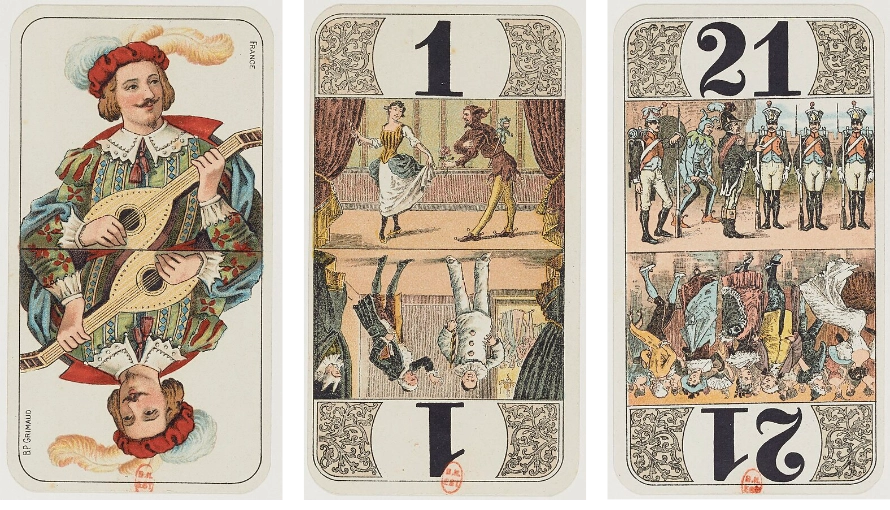
Editor : B. P. Grimaud (Paris) between 1898 and 1899
Rules and the Joy of Play
Tarot is most commonly played by four, though tables of three or five are possible. Each player is dealt 18 cards; a six-card “chien” (“the dog”) sits at the deck’s center, to be claimed, set aside, or wielded as the game’s tides demand.
Play proceeds as follows:
- Bidding: Players assess their hands and bid if they wish to “take”—assuming the solo role, with different levels of risk (Petite, Garde, Garde sans, Garde contre)
- The Chien: Depending on the final bid, the winning player (taker) may add the chien’s cards to their hand, then discard a matching number facedown.
- Trick-taking: Cards are played in rounds (“tricks”), with strict requirements to follow suit or trump. If unable to follow suit, a player must play a trump—a rule lending the game both order and excitement
- Counting Points: After all tricks, points are tallied—most importantly the fate of the oudlers. The solo taker’s success or failure ripples through the scores.
What sets French Tarot apart is its balance of chance and strategy, its social rhythm, and the drama as oudlers and high trumps fly across the table.
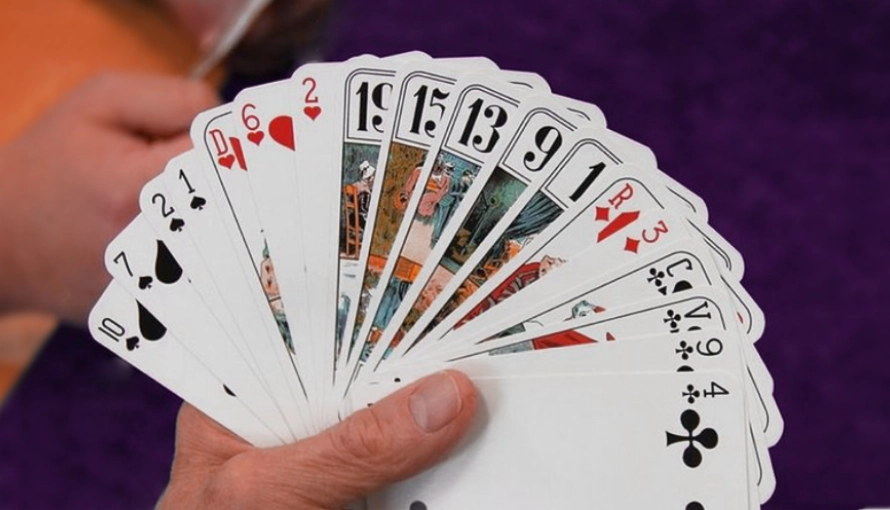
Jeu de Tarot for the people: A national obsession
Over centuries, tarot left the closed salons of the elite and found its way to provincial tables, city cafés, and family gatherings like mine. It never entirely lost its tinge of mystery or sophistication, but in France, tarot became a great unifier, a game played by grandparents and grandchildren, university students and retirees.
In the 20th century, Tarot grew into one of the most played card games in France. Tournaments sprang up. In 1973, the Fédération Française de Tarot was founded, standardizing rules and cementing the game’s status in everyday culture.
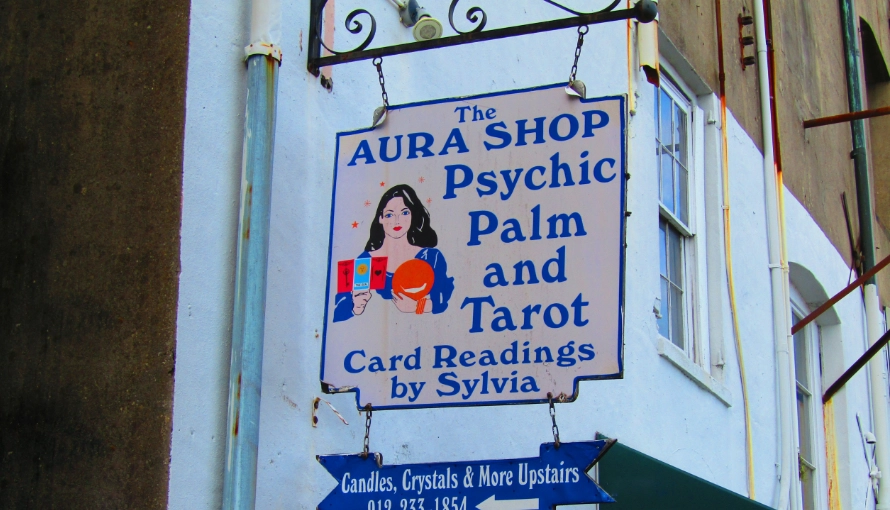
From game to oracle
Most people outside France know “Tarot” as a fortune-teller’s tool, full of mystic promise. This reputation, paradoxically, is a late development, arising only centuries after the card game blossomed. In 18th-century France, as the Enlightenment gave way to Romanticism, mystics and magicians re-imagined tarot’s imagery as a map to hidden truths. The esoteric decks that followed, the Tarot de Marseille, Rider-Waite-Smith, owed as much to these French dreams as to Italian originals.
Today, the dual identity endures. For some, tarot is a game of tactics and daring; for others, a path to self-discovery, mystery, or even spiritual awakening.
Where to buy a Tarot deck in the UK
Ready to shuffle some real cards? Pick up a proper Tarot deck in the UK on Amazon, whether for play or collection. Just a quick word of advice: most tarot decks you’ll find on UK shelves are made for fortune-telling, not games. So, make sure you’re choosing a 78-card “Tarot Nouveau” or a French tarot set made specifically for gameplay.
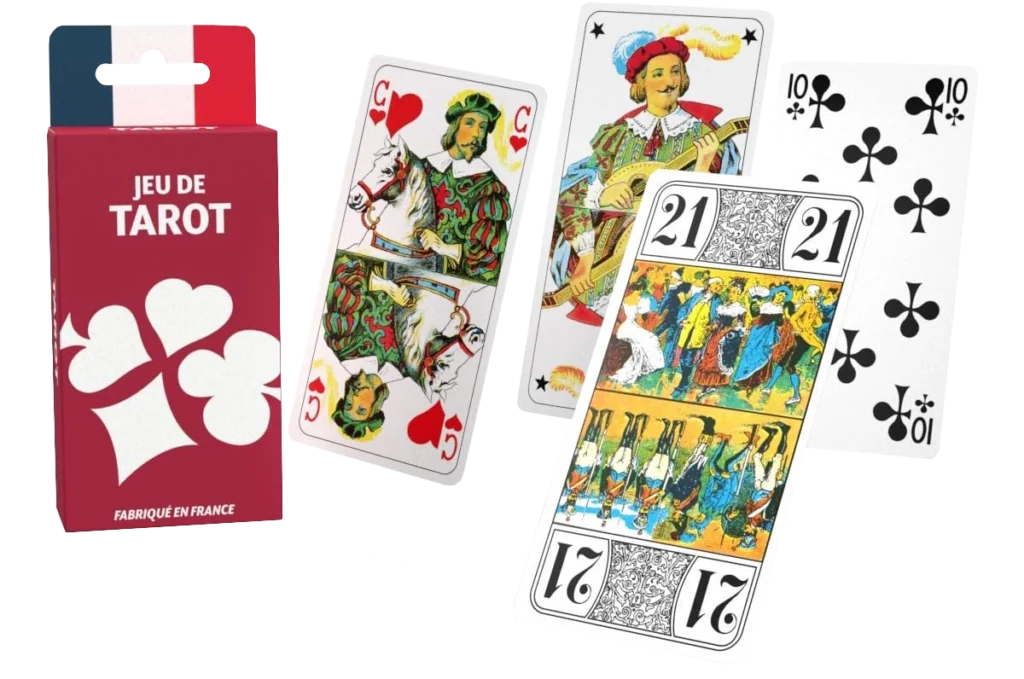
La Ducale Jeu de Tarot
Please note: this set does not include game rules, but you can easily find them online here.

